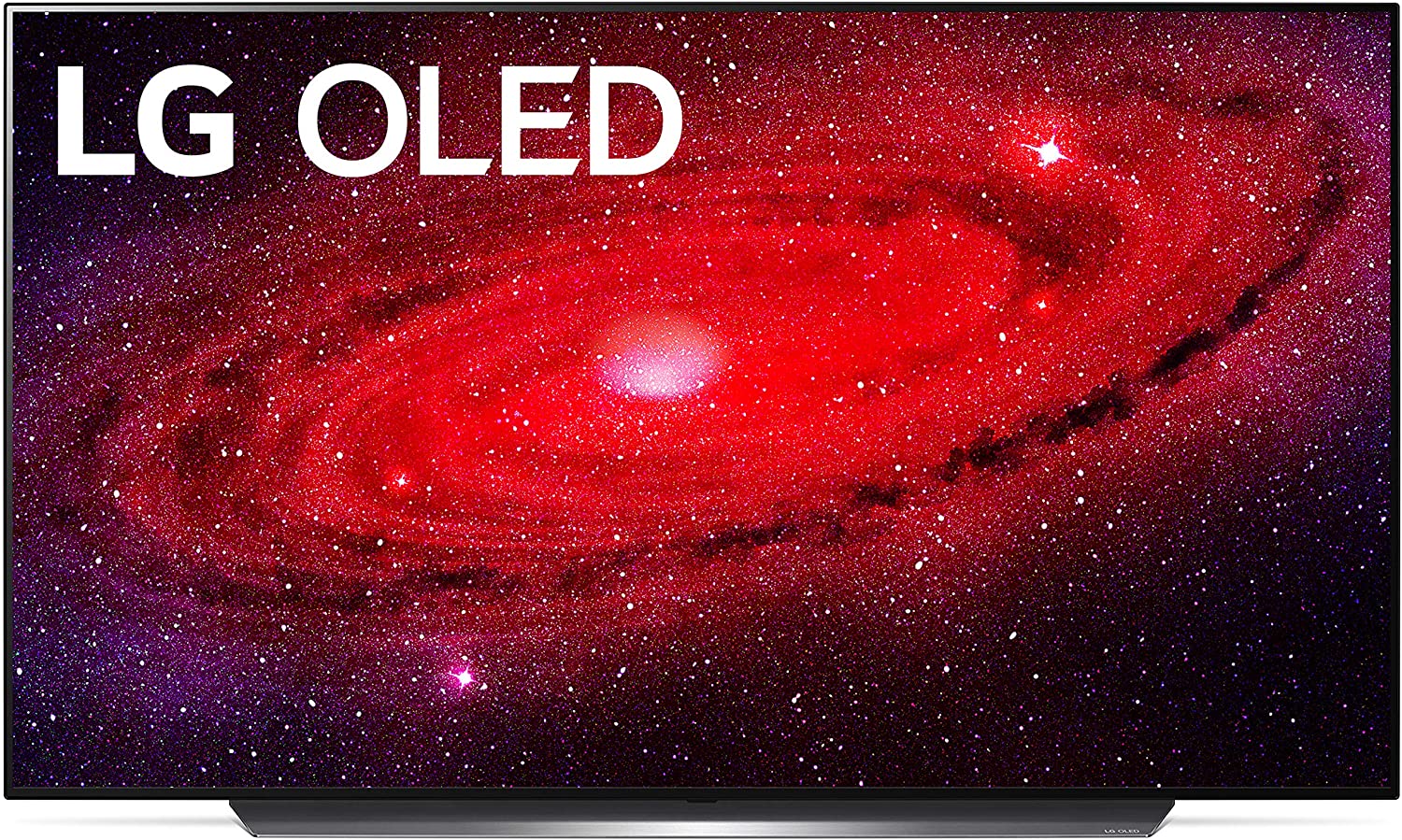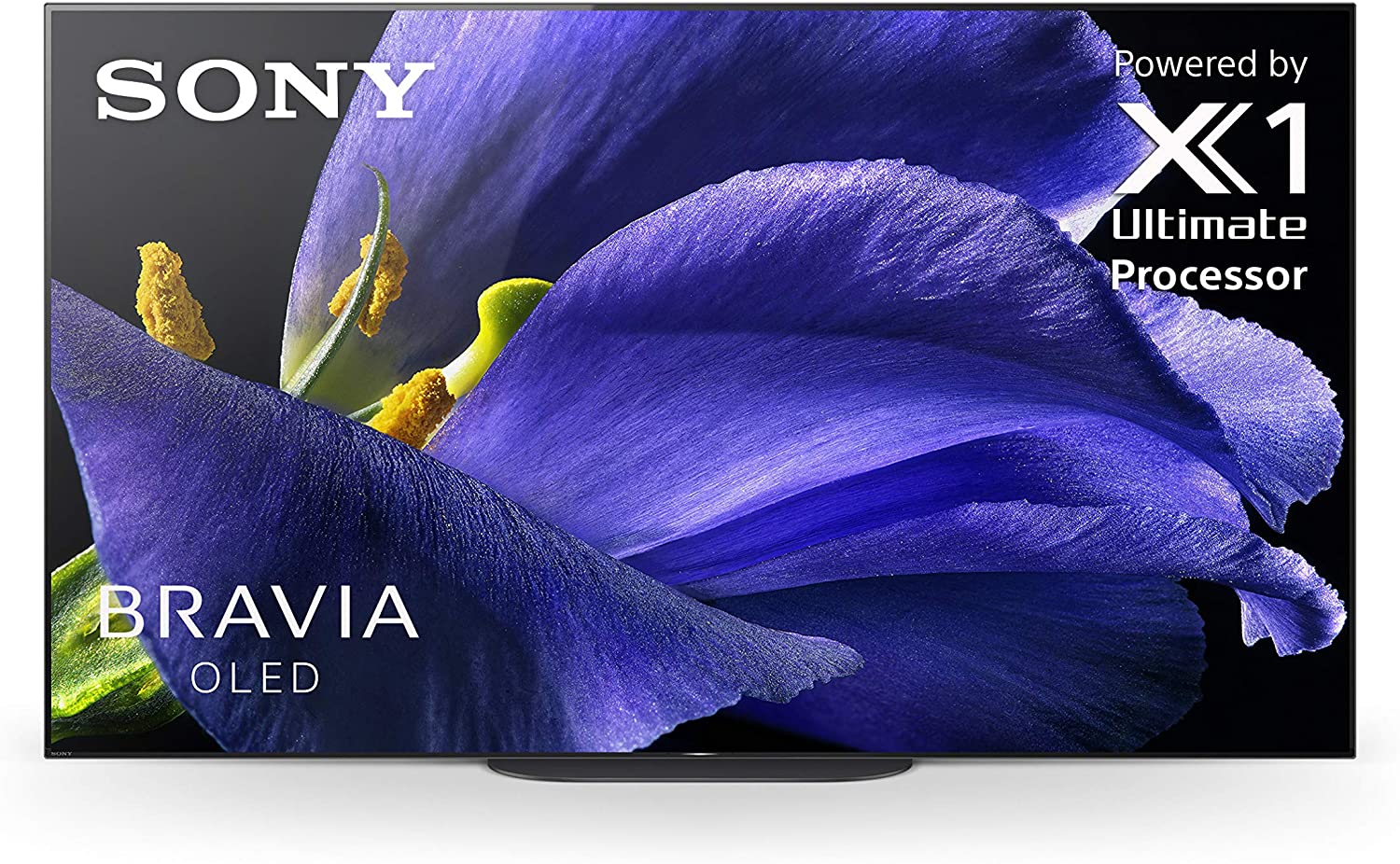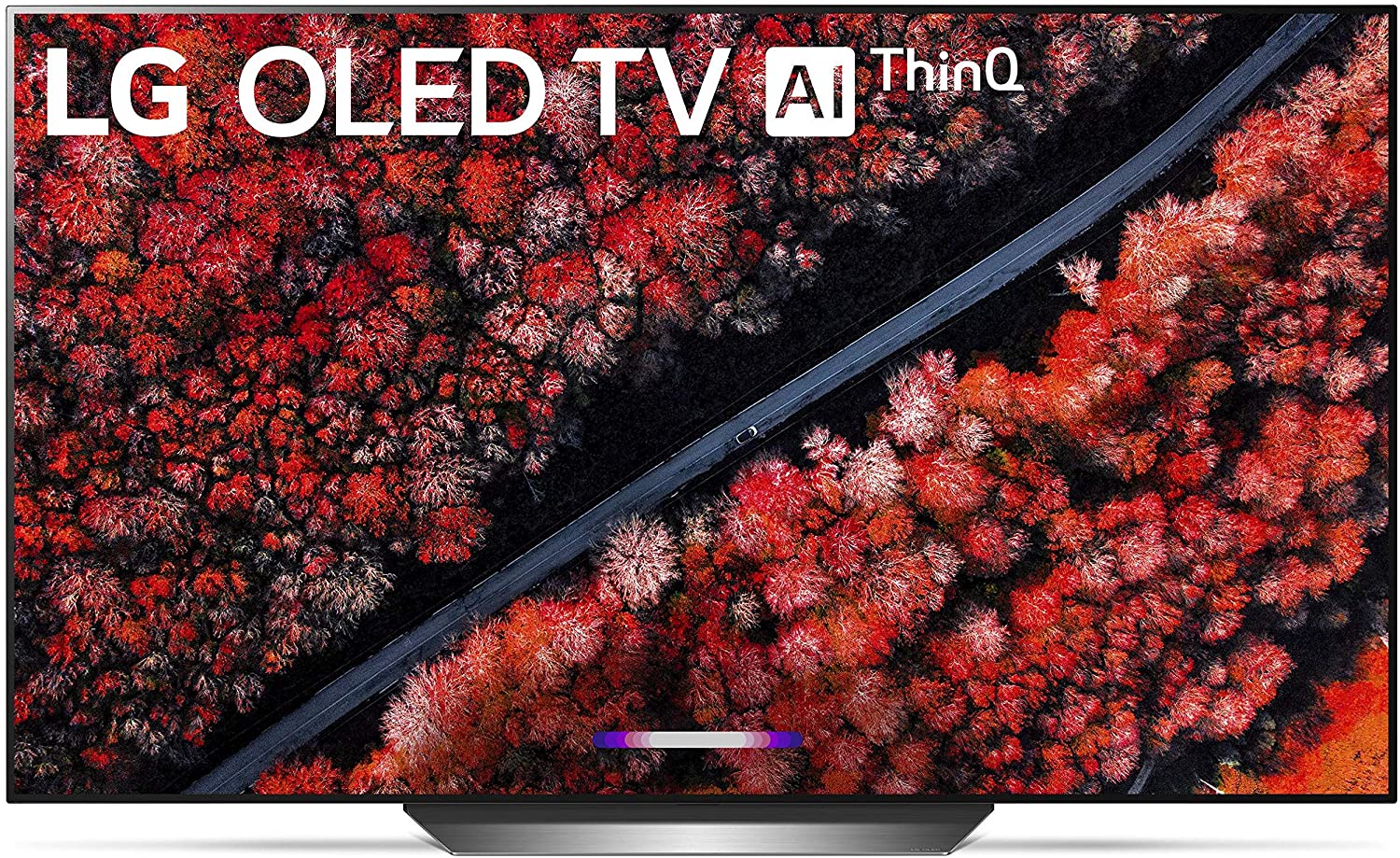Your TV experience is significantly different depending on the type of display you're watching on. You may have already heard of an LCD, which is commonplace and widely available. With display technology changing, there are so many other ways to enjoy content.
It may feel like your smartphone display emits a clearer picture than your TV. Not only is it often newer technology, but smartphone displays also often use AMOLED display or OLED display options. These display options are available with an OLED TV.
In this article, we'll break down the best display options available to you and why there's a difference between AMOLED vs OLED display TVs.
 This LG OLED Smart TV has Alexa as a built-in feature, which makes it easy to start watching anything. Like most 2020 models out on the market, this TV shows 4K, and it does so using an LG-patented a9 Gen 3 AI image processor. This is an advanced processor that uses AI technology to enhance the picture, motion, and sound of almost everything you’re watching. OLED TV sets are great for gaming, and this TV gives a crisp picture quality and has a high refresh rate.
This LG OLED Smart TV has Alexa as a built-in feature, which makes it easy to start watching anything. Like most 2020 models out on the market, this TV shows 4K, and it does so using an LG-patented a9 Gen 3 AI image processor. This is an advanced processor that uses AI technology to enhance the picture, motion, and sound of almost everything you’re watching. OLED TV sets are great for gaming, and this TV gives a crisp picture quality and has a high refresh rate.
 This TV by Sony is part of their Bravia series of TV sets, with OLED technology. With an OLED display, you get millions of pixels that are all emitting light and can produce a crisp picture and true, vibrant colors. OLED also can produce an absolute black that you can get with Sony’s OLED TV. This TV is powered by their X1 Ultimate Professor and analyzes the content that’s on-screen to get the best possible picture. It also has Smart TV capabilities and comes with Google Assistant built-in.
This TV by Sony is part of their Bravia series of TV sets, with OLED technology. With an OLED display, you get millions of pixels that are all emitting light and can produce a crisp picture and true, vibrant colors. OLED also can produce an absolute black that you can get with Sony’s OLED TV. This TV is powered by their X1 Ultimate Professor and analyzes the content that’s on-screen to get the best possible picture. It also has Smart TV capabilities and comes with Google Assistant built-in.
 This may be an older model, but the LG C9 Series Smart OLED TV is just as powerful as a newer OLED TV panel. OLED produces a great 4K resolution, also called Ultra HD, which you can get on this LG TV. If you’re interested in LG’s 2020 model, but it’s out of your price point, try an older OLED model instead.
This may be an older model, but the LG C9 Series Smart OLED TV is just as powerful as a newer OLED TV panel. OLED produces a great 4K resolution, also called Ultra HD, which you can get on this LG TV. If you’re interested in LG’s 2020 model, but it’s out of your price point, try an older OLED model instead.
 Since Samsung is using the same technology in their smartphones, they’ve brought it to their TV panels with this Ultra HD model. It has a framed design feature so that when your TV is off, it’ll display an art piece or decoration. This is a good idea if you’re looking for your home tech to blend in with your house décor. Samsung has lots of other QLED models as well if you’re looking for a TV panel but considering whether or not you want your TV to blend in is something to consider.
Since Samsung is using the same technology in their smartphones, they’ve brought it to their TV panels with this Ultra HD model. It has a framed design feature so that when your TV is off, it’ll display an art piece or decoration. This is a good idea if you’re looking for your home tech to blend in with your house décor. Samsung has lots of other QLED models as well if you’re looking for a TV panel but considering whether or not you want your TV to blend in is something to consider.
What is OLED?
An OLED display is a short form for Organic Light Emitting Diode. This means that to emit light, carbon and other organic compounds combine to create different colors of light. Other displays don’t use naturally occurring organic elements and compounds to produce light. An OLED display is very thin in size, so it's typically seen on smartphone displays or computer monitors. It's great for a TV display because it's lightweight and thin design can still produce vibrant colors and has a fresh refresh rate. Smartphone companies like Samsung typically use an OLED panel because it can provide rich colors and saturation that other display technology like LED cannot. If you’re someone looking for true color in your picture, this is where OLED technology comes in handy. OLED does not need a backlight to work, so whenever it’s emitting light, it’s doing that to create colors. When it needs to show black on screen, an OLED pixel will simply turn off and show the screen color, meaning it produces true blacks. Another display technology like LED requires a lit-up backlight to work, meaning black colors won’t show up as accurately as an OLED display.What is AMOLED?
AMOLED, on the other hand, is actually a type of OLED display. It stands for Active Matrix Organic Light-Emitting Diode and can be displayed on many products. The active matrix means that it works using an active matrix system that controls the current flow to each visible pixel. You’ll see it in portable products like the Samsung Galaxy S4, S3, or any of Samsung’s newer Galaxy Note models. It’s also used in smartwatches, game consoles, and some cameras. It offers a high definition screen quality, and that’s why it’s a great choice for TV displays.AMOLED vs OLED: What’s the Difference?
The difference between AMOLED and OLED might not be visible to everyone, but from a technical standpoint, they work in different ways. While AMOLED is a type of OLED display, it works differently because it can fit any display size. AMOLED actually uses more power than OLED, but it has stronger performance than other types of OLED display technologies. If you’re looking for a product that offers a thin, sleek, light design, AMOLED is the way to go instead of going for typical LCD or LED displays.The Best OLED & AMOLED TV Panels
Let’s break down some of the best OLED and AMOLED TV panels on the market in 2020. While size is an important aspect of picking out a new TV set, there are actually other things to keep in mind as well. With so many different technologies, it can be hard to choose which one works for you. If you’re looking to get an OLED or AMOLED TV, here are some things to keep in mind:- What will you be watching on TV? (Think images and colors)
- How accurate do you want colors to appear on the screen?
- Do you look for fluid motion and a fast refresh rate? (Ideal for sports and videogames)
- Are you looking for a Smart TV that can connect to the internet without an external device?
LG OLED55CXPUA Alexa Built-In CX 55" 4K Smart OLED TV (2020)
 This LG OLED Smart TV has Alexa as a built-in feature, which makes it easy to start watching anything. Like most 2020 models out on the market, this TV shows 4K, and it does so using an LG-patented a9 Gen 3 AI image processor. This is an advanced processor that uses AI technology to enhance the picture, motion, and sound of almost everything you’re watching. OLED TV sets are great for gaming, and this TV gives a crisp picture quality and has a high refresh rate.
This LG OLED Smart TV has Alexa as a built-in feature, which makes it easy to start watching anything. Like most 2020 models out on the market, this TV shows 4K, and it does so using an LG-patented a9 Gen 3 AI image processor. This is an advanced processor that uses AI technology to enhance the picture, motion, and sound of almost everything you’re watching. OLED TV sets are great for gaming, and this TV gives a crisp picture quality and has a high refresh rate.
Sony XBR-65A9G 65" (3840 x 2160) Bravia 4K Ultra High Definition Smart OLED TV
 This TV by Sony is part of their Bravia series of TV sets, with OLED technology. With an OLED display, you get millions of pixels that are all emitting light and can produce a crisp picture and true, vibrant colors. OLED also can produce an absolute black that you can get with Sony’s OLED TV. This TV is powered by their X1 Ultimate Professor and analyzes the content that’s on-screen to get the best possible picture. It also has Smart TV capabilities and comes with Google Assistant built-in.
This TV by Sony is part of their Bravia series of TV sets, with OLED technology. With an OLED display, you get millions of pixels that are all emitting light and can produce a crisp picture and true, vibrant colors. OLED also can produce an absolute black that you can get with Sony’s OLED TV. This TV is powered by their X1 Ultimate Professor and analyzes the content that’s on-screen to get the best possible picture. It also has Smart TV capabilities and comes with Google Assistant built-in.
LG C9 Series Smart OLED TV - 77" 4K Ultra HD with Alexa Built-in, 2019 Model
 This may be an older model, but the LG C9 Series Smart OLED TV is just as powerful as a newer OLED TV panel. OLED produces a great 4K resolution, also called Ultra HD, which you can get on this LG TV. If you’re interested in LG’s 2020 model, but it’s out of your price point, try an older OLED model instead.
This may be an older model, but the LG C9 Series Smart OLED TV is just as powerful as a newer OLED TV panel. OLED produces a great 4K resolution, also called Ultra HD, which you can get on this LG TV. If you’re interested in LG’s 2020 model, but it’s out of your price point, try an older OLED model instead.
Samsung 43" Class The Frame QLED Smart 4K UHD TV (2019) - Works with Alexa
 Since Samsung is using the same technology in their smartphones, they’ve brought it to their TV panels with this Ultra HD model. It has a framed design feature so that when your TV is off, it’ll display an art piece or decoration. This is a good idea if you’re looking for your home tech to blend in with your house décor. Samsung has lots of other QLED models as well if you’re looking for a TV panel but considering whether or not you want your TV to blend in is something to consider.
Since Samsung is using the same technology in their smartphones, they’ve brought it to their TV panels with this Ultra HD model. It has a framed design feature so that when your TV is off, it’ll display an art piece or decoration. This is a good idea if you’re looking for your home tech to blend in with your house décor. Samsung has lots of other QLED models as well if you’re looking for a TV panel but considering whether or not you want your TV to blend in is something to consider.
Featured Image Legacy
https://wirevibes.com/wp-content/uploads/2020/08/FL2jYvo9JjwZMnLvs6sdNW.jpg
